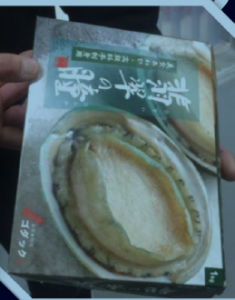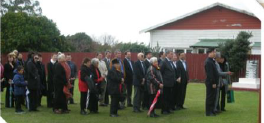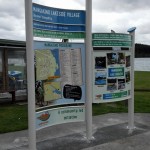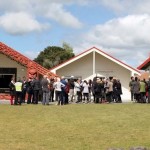Ōpōtiki on TV
Ōpōtiki is sure doing things the community-led way. The long journey continues. It’s great to watch them acknowledge and celebrate their amazing achievements to date. It’s been a privilege for Inspiring Communities to walk alongside and support Ōpōtiki’s kaupapa and mahi for many years.
Watch Seven Sharp’s story about their Mussel Farm
Ōpōtiki using their taonga to harbour a dream
Decades ago, some Whakatōhea kaumatua advocated farming the sea, and rebuilding the marine based economy which the Iwi had been renowned for pre-confiscation. At the time there was scepticism – maybe the vision seemed impossible….
Ōpōtiki now has the largest offshore marine farm in New Zealand and local iwi, Te Whakatōhea is the majority shareholder. Over the past 20 years Te Whakatōhea and partners have co invested in research and farming infrastructure to harvest spat and grow mussels. Both are now being produced at extraordinary rates.
It’s now time to fulfil the plans to develop the Ōpōtiki Harbour so that both the farm can be serviced and the mussels processed locally – generating local jobs and wealth. Regional commitment to investment is lined up, awaiting government commitment so that construction can commence.
Ōpōtiki, an eastern Bay of Plenty sea side town resident to nearly 5 thousand, was once considered one of New Zealand’s most deprived communities. The town has had heavy unemployment, decreases in population, and a large dependence on government benefits. Increasingly both locals and outsiders are perceiving it differently. They’re beginning to believe that benefits plus seasonal work in kiwifruit need no longer be the only option for a significant portion of the population.
Through their joint leadership, Te Whakatōhea and the Ōpōtiki District Council have integrated iwi and community-led development approaches to empower their community’s transformation.
Shared local visions drive action and change
Ōpōtiki had a desire for change, they envisioned a community that could be more sustainable: Iwi saw opportunity for economic growth congruent with their values and aspirations, that would lead to job opportunities for their people; the Council saw potential in a sustainable seafood industry, along with other industries enabled by a viable harbour, which would all support the community’s wider vision for change.
Using existing strengths and assets
UTe Whakatōhea has a strong connection to the sea. Traditionally known as enterprising seafarers and coastal traders, their history is closely linked to the ocean. The community saw their vision as an asset, one of great value in rebuilding a vibrant local economy and wellbeing. Layered over this was Ōpōtiki harbour. It had been developed in European settlement times for whaling and coastal trading, and was once a busy, thriving harbour – a connection to both European and Māori heritage.
Many people, groups and sectors working together
MTe Whakatōhea, settled on their vision to develop the marine farm, reached out to multiple groups and organisations to assist. Ōpōtiki District Council, with community support got behind the initiative, taking leadership to develop the Harbour. Getting the marine farm underway and confirming the viability of the harbour development has been complex. Processes with community, iwi, multiple central and local government layers, scientist, researchers, investors and a wide range of businesses. There’s been effort regionally, nationally and internationally over many years and that’s created more relationships and trading opportunities both here and overseas.
The Ōpōtiki Marine Advisory Group, established nearly a decade ago, has been a constant thread at the local level, bringing Council, Te Whakatōhea, marine farm leadership and other business people, to the table, along with funders, the regional council and economic development agency.
Working adaptively, learning informs planning and action
WOver the decades of persistence, patches of progress have been frequently interrupted by knock- backs and road- blocks. Two things stand out. One is a collective determination to keep going, learning from experience and adapting to new circumstances and ideas. The other is the value of diverse skills, knowledge and leadership skills around the tables driving these projects, which means different people and organisations can step up when leadership is needed, and then step back as new challenges and opportunities emerge, demanding other expertise.
Watch Ōpōtiki Mussell Farm on Seven Sharp.
My Inspiring Community – Halo Whakatane
HALO was born from a shared vision that the community can expand on the success of their volunteer restoration programmes, like the Whakatāne Kiwi Project, taking conservation to the next level and creating a sanctuary for the whole community.
Mangakino & Whakamaru Heritage Trail
The Mangakino and Whakamaru Heritage trail has been blessed and opened (Nov 2016). When Mangakino people talked about their visions for the future during “Wow! E tū Mangakino! Let’s Dream” back in 2011, one of their community aspirations was to celebrate their area’s heritage more.
This trail is designed to link with the Waikato River Trails which attracts thousands of visitors PAST Mangakino annually – now the Heritage Trail offers them a side tour through the Townships and many memorable moments!
It’s taken a huge amount of research, persistence and patience from many people and especially Lisa, the local community broker. Recently the Mangakino community-led development group organised a community celebration for 70 years since the township was established, and blessed the new Heritage Trail – they invited everyone who had helped, along with residents of today and yesteryear. On a beautiful day at Pouakani Marae, locals, past residents and supporters gathered to enjoy and share memories, and to celebrate Mangakino.
Mangakino – community of choice!
It’s little wonder that this small central North Island community has featured so positively in recent national media. With a population of around 1,000 spread across the rural area and in townships of Whakamaru and Mangakino, the people there are ‘going for it’ to build local community spirit, vibrancy and achievement.
Economic development is one thrust of their effort. Attracting more visitors, and creating more for them to do locally is a community focus. New highway and local signage now ensures road users know the townships are there, and the wealth of activities available. Cafes and eateries (one established by a local young woman only opened one year ago) are very busy and provide more work opportunities. They’ve also created their own Info Site – ‘that Dam Info Caravan’ which can be towed across the country promoting Mangakino and Whakamaru, and providing a base for locals at events.
There’s a growing focus on making sure local people know about what jobs are coming up, and aware of the skills and training they need. There are community systems in place to help locals, especially young people, get into training and complete relevant courses so their options for work grow, along with their confidence. Thirty people from the area received certificates at the recent Industry Training Organisation Awards Ceremony for 2015. And the community are supporting groups of people to travel to work out of town, an impossibility for individuals one by one.
This summer Mangakino and Whakamaru will launch the first boards of a new Heritage Trail celebrating local history, and providing both townfolk and visitors another activity to enjoy, perhaps in association with cycling or walking the Waikato River Trails which pass through the area. Local retail sales are up, the visitor spend is up, and Mangakino has enjoyed an increase of 35.4% in spending based on the same period last year – to the value $678,976 (figures from the MarketView Quarterly Report to September 2015 for Taupō District Council).
Since establishment of the towns in the mid 1900s to build the hydro dams, they’ve been known as family friendly places. Both current residents and bach owners treasure that it feels safe to let tamariki and children walk to the shops or to the new skatepark that young people helped design and fundraise for. And there are a growing number of community-run events, and participation, including the annual raft race and Easter Sunday Services and picnics. This year float numbers in the annual Christmas Parade have trebled! There’s a Community Calendar, website and Facebook page to keep people connected, a local weekly news-sheet and regular emails to the non-resident ratepayer database to keep those with a stake in Mangakino informed and connected. The volunteer base is growing at a rate not known for years, especially for the essential local Fire and Ambulance services, but also for the senior citizen activities and local social and youth services.
So what’s the magic at work here? We think it’s about a community growing its own capability and confidence to work together more to achieve their own local visions. Progress has been enabled by the willingess of local employers and businesses, local health and social services, the marae, residents, the schools and whanau services, and the local Council to ‘take off their individual agency hats’ and find new ways to contribute their assets and strengths in the interests of transforming their community. A government agency has contributed some resourcing, and shown willingness to learn to work in new ways itself to help enable this change over a four year period.
The community has invested in some “glue” – co-ordination and brokering to help create some new systems that support sharing information and working together more. They have taken time to learn new ideas and skills. Their evaluation approach takes a focus on what’s precious and what’s changing among people and organisations, and whether they are ‘moving the dial’ on working together more. They realise that it’s not just the individual projects that matter, it’s the strength of ties locally, and the shared local vision, commitment and capacity to work together that will endure.
Inspiring Communities reflects that this is long-term work for a community. National and international evidence suggests it takes a decade for communities to embed new ways of working together. It spotlights the importance of integrated policies and funding flows, and a comprehensive and multi-year approach.
The Department of Internal Affairs has contributed some resourcing, and shown willingness to learn to work in new ways itself to help enable this change over a four year period.
For more information see www.mangakino.net.nz
More information on their heritage trail created in 2016.







